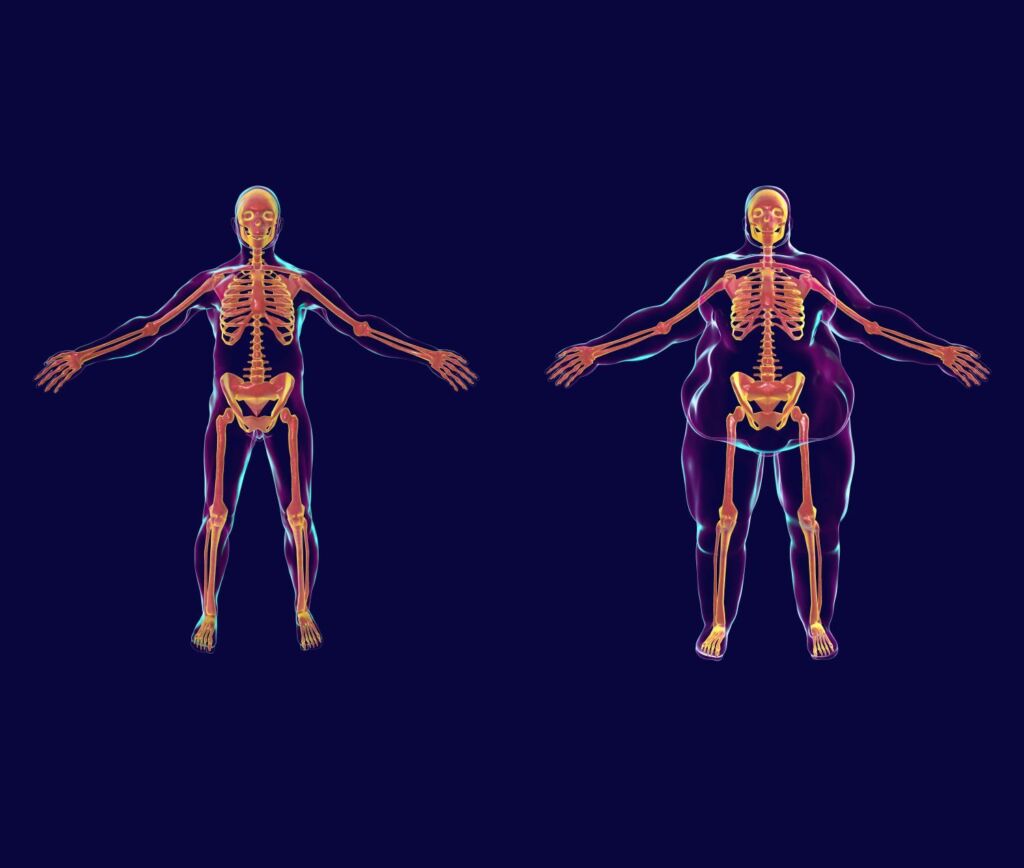Osteoporosis affects almost one in three women and one in five men. You can take countermeasures at a young age. Strengthen your bones with our tips.
From the age of 30, our bones begin to age and their stability gradually decreases naturally. However, osteoporosis leads to an excessive reduction in bone mass, which makes the bones less resilient and can break even under light strain. Osteoporosis often remains undetected for a long time. This is because bone loss itself does not cause pain.
According to estimates, one in three women and one in five men suffer a bone fracture due to osteoporosis. This makes it the most common bone disease of all. Post-menopausal women in particular have a higher risk of developing osteoporosis due to the natural estrogen deficiency. Although testosterone production also decreases in men, it does so much more slowly and to a lesser extent. The problem: the respective sex hormones are important for the formation and maintenance of bone mass.
The following tips will strengthen your bones and reduce the risk of osteoporosis:
1. Get moving and keep moving
Even children and young people should get plenty of exercise and play sport. This is because exercise such as jogging or ball sports stimulates bone growth. After the age of 30, bone density gradually decreases. “This process can be slowed down considerably with sports such as jogging, dancing or hiking,” says Gregor Freystätter, Attending Physician and Deputy Director at the Department of Aging Medicine at the University Hospital Zurich. The principle is simple: movements that cause quick, short impacts, such as jogging or jumping, stimulate the bone cells more than low-impact movements such as swimming or cycling. To keep your bone density and mass as stable as possible, you should also get plenty of exercise in old age. Train your stamina and strength as well as your sense of balance.
2. Focus on the right foods
The two nutrients calcium and protein make a significant contribution to building and, in old age, maintaining strong bones and muscles. Good sources of protein are meat, dairy products, tofu, nuts and pulses. Dairy products, tofu, figs, green vegetables and mineral water are particularly rich in calcium. “If you eat three portions of dairy products a day – for example a yogurt, 30 g of hard cheese and 2 dl of milk – you can cover your daily calcium requirement and have already taken in a lot of protein,” says Claudia Vogt, nutritionist at the Department of Endocrinology, Diabetology and Clinical Nutrition at the University Hospital Zurich. With an additional 300 g of vegetables and 100 g of meat or 150 g of tofu, the daily protein requirement is also covered.
3. Soak up the sun
Vitamin D ensures that we can absorb calcium better and is important for the mineralization of bones. Our body produces vitamin D through the sunlight that hits our skin. “Sunbathing for around 30 minutes a day around midday would be ideal for our body to produce enough vitamin D,” says Freystätter. However, as this is only possible if you do not use sun cream, particularly sensitive skin types should keep the period shorter. Our body can only absorb very small amounts of vitamin D from food. As a result, many people lack sufficient vitamin D, especially in the winter months. “In this case, supplementing with vitamin D supplements can be helpful,” says Freystätter. It is important that you discuss the dosage with your family doctor or pharmacist. Vogt points out that many products that can be purchased on the Internet are dosed far too high.
4. Alcohol only in small quantities
Excessive alcohol consumption can increase the risk of osteoporosis. “The limiting value is two standard glasses per day for men and one standard glass per day for women,” says Vogt. A standard glass corresponds to one dl of wine or three dl of beer.
5. Refrain from smoking
Smoking deprives the body of valuable vitamins and nutrients. This damages our bones. You should therefore refrain from smoking altogether.
6. Watch your weight
Being underweight is also a risk factor for osteoporosis. The Body Mass Index (BMI) serves as a guideline here. A BMI between 20 and 25 is considered ideal. If it is lower, our body lacks important nutrients such as calcium and produces fewer sex hormones. “The BMI can also be slightly higher for older people, because they lose muscle mass more quickly when they lose weight,” says Freystätter. However, muscles in particular, which are closely connected to the bones, provide additional stability. Conversely, being overweight puts strain on the joints and bones and should also be avoided.




